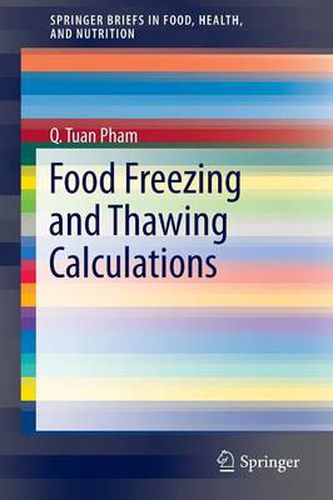Readings Newsletter
Become a Readings Member to make your shopping experience even easier.
Sign in or sign up for free!
You’re not far away from qualifying for FREE standard shipping within Australia
You’ve qualified for FREE standard shipping within Australia
The cart is loading…






This title is printed to order. This book may have been self-published. If so, we cannot guarantee the quality of the content. In the main most books will have gone through the editing process however some may not. We therefore suggest that you be aware of this before ordering this book. If in doubt check either the author or publisher’s details as we are unable to accept any returns unless they are faulty. Please contact us if you have any questions.
Freezing time and freezing heat load are the two most important factors determining the economics of food freezers. This Brief will review and describe the principal methods available for their calculation. The methods can be classified into analytical methods, which rely on making physical simplifications to be able to derive exact solutions; empirical methods, which use regression techniques to derive simplified equations from experimental data or numerical calculations and numerical methods, which use computational techniques such as finite elements analysis to solve the complete set of equations describing the physical process. The Brief will evaluate the methods against experimental data and develop guidelines on the choice of method. Whatever technique is used, the accuracy of the results depends crucially on the input parameters such as the heat transfer coefficient and the product’s thermal properties. In addition, the estimation methods and data for these parameters will be reviewed and their impacts on the calculations will be evaluated. Freezing is often accompanied by mass transfer (moisture loss, solute absorption), super cooling and nucleation and may take place under high pressure conditions; therefore methods to take these phenomena into account will also be reviewed.
$9.00 standard shipping within Australia
FREE standard shipping within Australia for orders over $100.00
Express & International shipping calculated at checkout
This title is printed to order. This book may have been self-published. If so, we cannot guarantee the quality of the content. In the main most books will have gone through the editing process however some may not. We therefore suggest that you be aware of this before ordering this book. If in doubt check either the author or publisher’s details as we are unable to accept any returns unless they are faulty. Please contact us if you have any questions.
Freezing time and freezing heat load are the two most important factors determining the economics of food freezers. This Brief will review and describe the principal methods available for their calculation. The methods can be classified into analytical methods, which rely on making physical simplifications to be able to derive exact solutions; empirical methods, which use regression techniques to derive simplified equations from experimental data or numerical calculations and numerical methods, which use computational techniques such as finite elements analysis to solve the complete set of equations describing the physical process. The Brief will evaluate the methods against experimental data and develop guidelines on the choice of method. Whatever technique is used, the accuracy of the results depends crucially on the input parameters such as the heat transfer coefficient and the product’s thermal properties. In addition, the estimation methods and data for these parameters will be reviewed and their impacts on the calculations will be evaluated. Freezing is often accompanied by mass transfer (moisture loss, solute absorption), super cooling and nucleation and may take place under high pressure conditions; therefore methods to take these phenomena into account will also be reviewed.